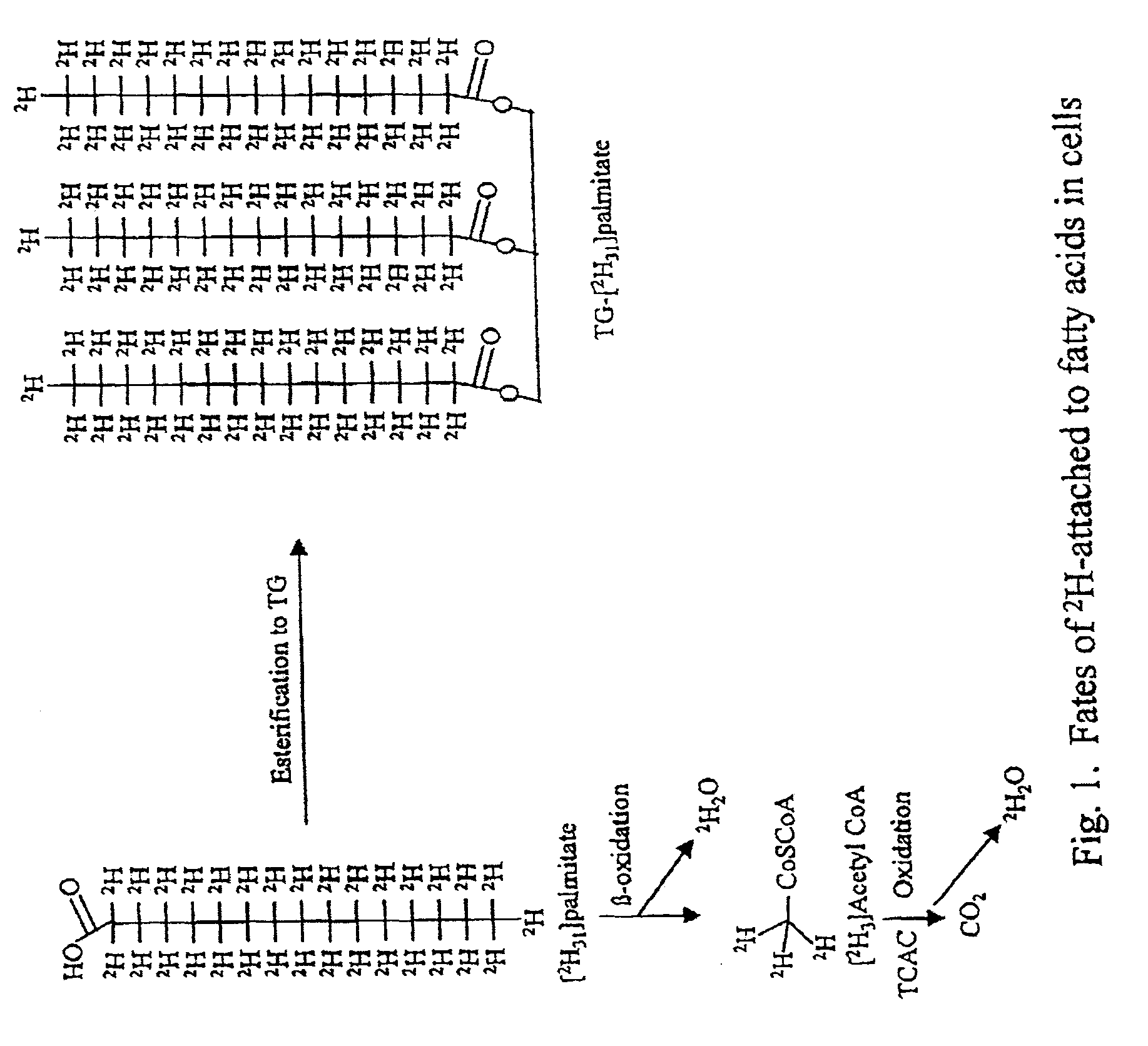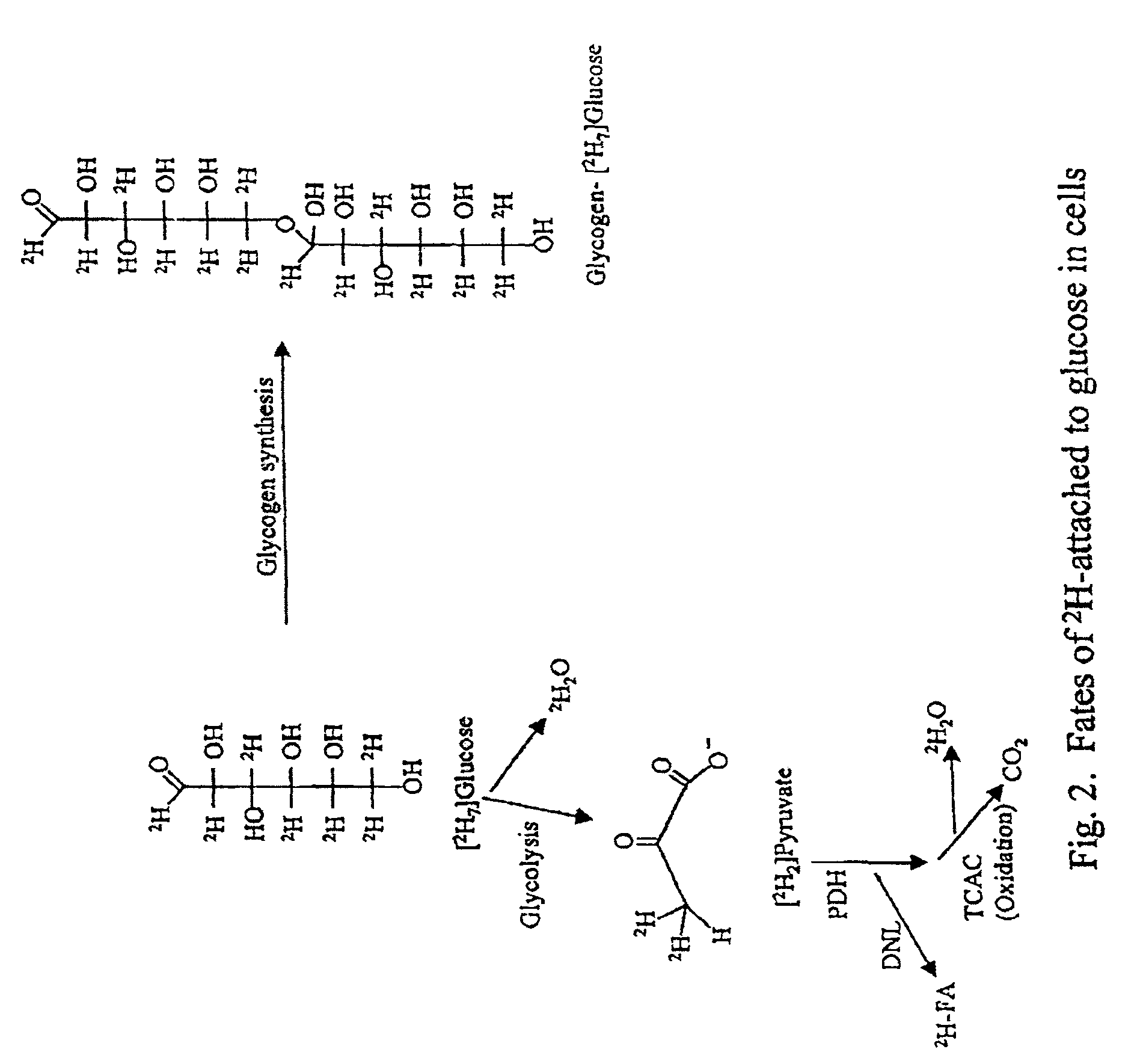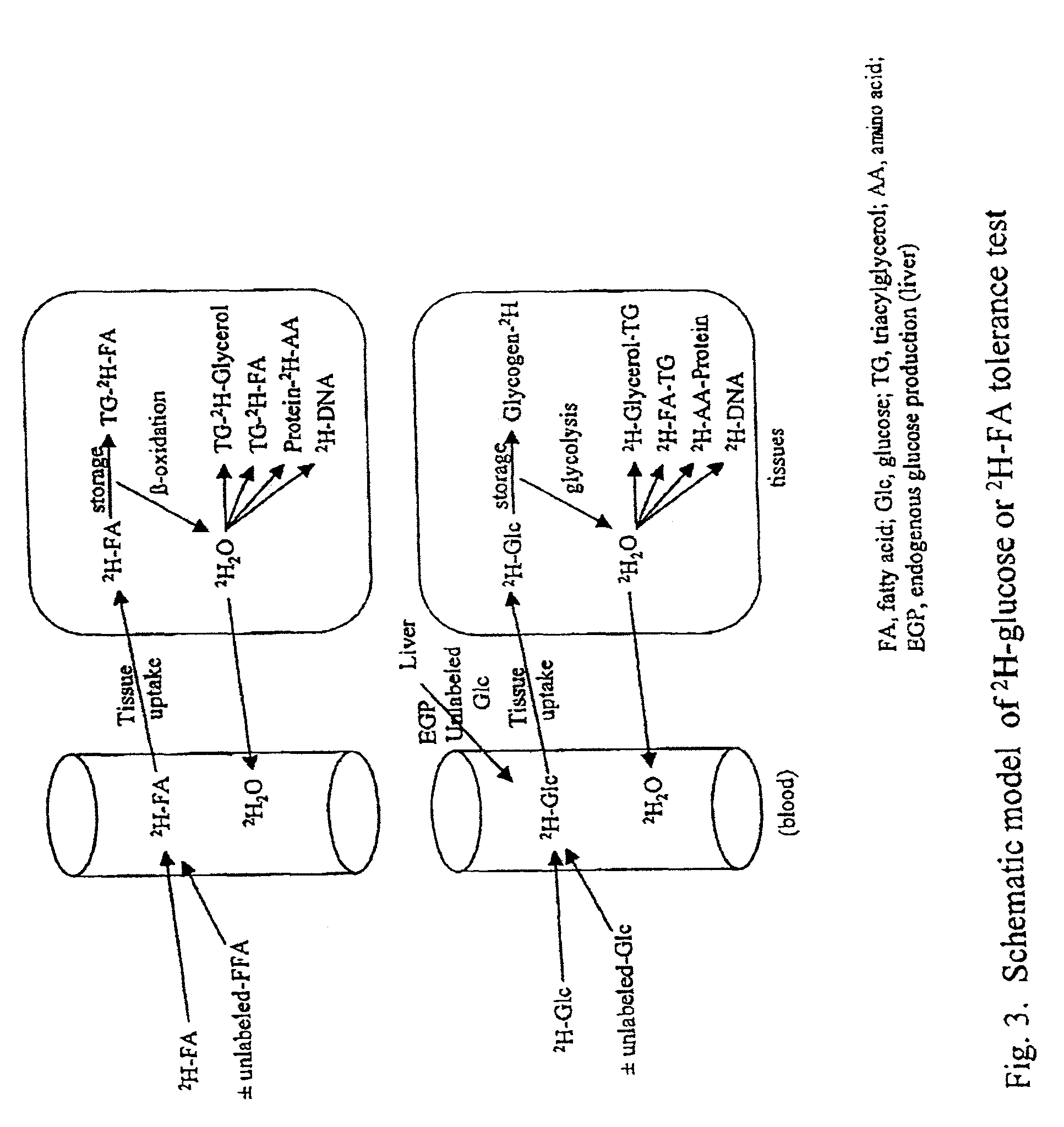Methods for identifying the effect of a drug agent on the metabolism of sugars and fats in an individual
a drug agent and individual technology, applied in the field of sugar and fatty acid metabolism, can solve the problems of crude approach, many limitations of current tools, and no information is generated about the specific metabolic fate or consequences
- Summary
- Abstract
- Description
- Claims
- Application Information
AI Technical Summary
Benefits of technology
Problems solved by technology
Method used
Image
Examples
example 1
Kinetic OGTT
Glycolytic Disposal of Glucose in Normal Rats and Mice
[0148]The kinetic oral glucose tolerance test for mice and rats is depicted in FIGS. 5 and 6, respectively. The figures depict percent glycolysis, measured by deuterium incorporation into water following administration of deuterium-labeled glucose.
[0149]Sprague-Dawley rats (200-250 g, Simonsen Inc., Gilroy Calif.) and C57Blk / 6ksj mice (10-15 g, Jackson Laboratories, Bar Harbor Me.) were used. Housing was in individual cages for rats and groups of 5 for mice. Feeding was ad-libitum with Purina® rodent chow. All studies received prior approval from the UC Berkeley Animal Care and Use Committee.
[0150]The 2H-glucose labeling protocol consisted of an initial intraperitoneal (ip) injection of 99.9% [6,6-2H2]glucose. For labeling rats and mice, 2 mg labeled glucose per gram body weight were introduced. Body water was collected as serum at various timepoints.
[0151]Glycolysis was measured by measuring deuterium in body water a...
example 2
Kinetic OGTT
Glycolytic Disposal of Glucose in Normal Rats and Mice
[0152]A kinetic oral glucose tolerance test in a human subject is depicted in FIG. 4. The figure depicts percent glycolysis, measured by deuterium incorporation into water following ingestion of deuterium labeled glucose.
[0153]The 2H-glucose labeling protocol consisted of an oral ingestion of 99.9% [6,6-2H2]glucose. 15 grams glucose in 50 grams oral load (30% [6,6-2H2]) were ingested by the human subject. Body water was collected as serum at various timepoints.
[0154]Glycolysis was measured by measuring deuterium in body water as a percent of administered [6,6-2H2]glucose normalized to account for different molar quantities of deuterium in molecular glucose and molecular water. Deuterized water was measured by isotope ratio mass spectrometry.
example 3
[0155][6,6-2H2]glucose was administered orally (15 grams in water) to a lean male human subject (Subject #1), to an overweight but not obese male human subject (Subject #2), to an obese female human subject (Subject #3), and to a lean male human subject with HIV / AIDS (Subject #4). Blood samples were collected (10 cc) every hour for four hours. 2H content of blood glucose was measured by isolating glucose from blood and preparing into a form compatible with isotope ratio mass spectrometry. The isotopic (2H2O) content of body water was measured by isolating water from the blood and preparing into a form compatible with isotope ratio mass spectrometry. Mass spectrometry was performed to calculate the fraction of H from 2H-glucose released into body water. This represents glycolysis / oxidation from the administered glucose load. Measurement of H-glucose content measured by mass spectrometry was compared to administered 2H content of administered 2H-glucose to calculate the body's product...
PUM
 Login to View More
Login to View More Abstract
Description
Claims
Application Information
 Login to View More
Login to View More - R&D
- Intellectual Property
- Life Sciences
- Materials
- Tech Scout
- Unparalleled Data Quality
- Higher Quality Content
- 60% Fewer Hallucinations
Browse by: Latest US Patents, China's latest patents, Technical Efficacy Thesaurus, Application Domain, Technology Topic, Popular Technical Reports.
© 2025 PatSnap. All rights reserved.Legal|Privacy policy|Modern Slavery Act Transparency Statement|Sitemap|About US| Contact US: help@patsnap.com



